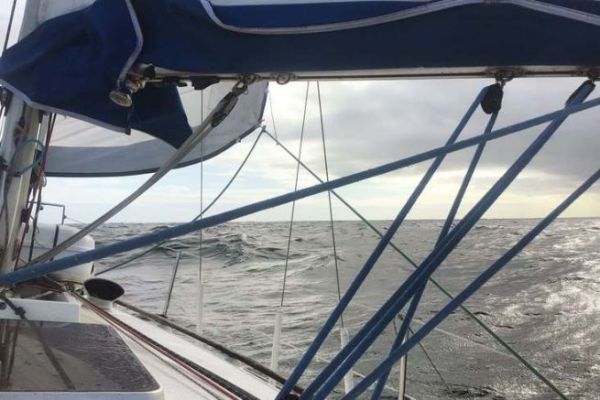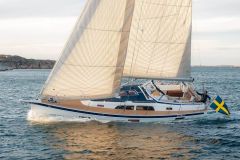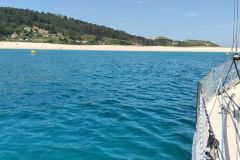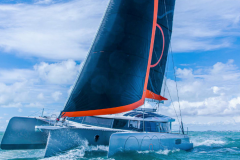North to South or South to North: same route, different reasons
The reasons for crossing the Bay of Biscay vary according to the location of the boat.
On the one hand, for some people living on the west coast of the Atlantic, it's a great playground for those who want to sail away from land for several days at a time, and enjoy a greater sense of disconnection. For example, some yachtsmen cross from Brittany to La Coruña or Gijón. They spend a few days there and then return to Brittany. The primary purpose of this expedition is the journey, not the destination. At a pontoon in Gijón, a sailor from Port-La-Forêt told us: "We come all the way here, stay a few days, then leave again. The best part is the crossing."
For sailors based in the South-West of France, it's more a question of the path to follow in order to reach other sailing playgrounds. It's an obligatory passage, not always envied, as one of them testifies: "We do it, we cross, to go to Yeu, Brittany. There, it's other sailing. But I'm not chasing after that one."
For others, it's a good training ground. The crossing gives you the chance to spend a night or two sailing, testing the boat and crew, while staying fairly close to the coast.
Inner and outer Bay of Biscay
The area from Hendaye to the ports of Ile d'Yeu or Les Sables d'Olonne can be defined as the inner Bay of Biscay. And this is no coincidence. In fact, these are the real shelters once you've set sail. Indeed, previous ports such as Capbreton, Bassin d'Arcachon or Royan quickly prove impenetrable when conditions become complicated. As one regular sums up: "Some people say you can take shelter in Arcachon, or even Capbreton. But if you have to take shelter, it's often because of heavy weather. And if there's a storm in those ports, they're not shelters. You can't get in".
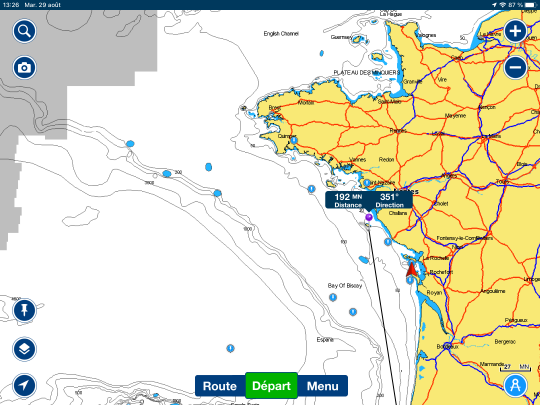
For sailors accustomed to making this crossing, it is complicated by its proximity to the coast, for a variety of reasons: fishermen operate in an area fairly close to the coast, the Cazaux firing zone and its calendar of activities need to be consulted, and finally, the risk represented by the coast itself. Indeed, in addition to the lack of retreat, it complicates the possibility of escape, of spreading out the storm, should the weather turn rough. It's for these reasons that some people don't "chase" this crossing, but it's an essential part of their journey to Brittany, as our south-western yachtsman reminds us: "I've already been stuck for a few hours not being able to cross the shooting zone. It's no fun. It's a good idea to find out about their schedules before you go, or to prepare your nav' plan by getting away from them."
The outer crossing is considered safer by some, as it is less frequented, if at all, by fishermen, while allowing the storm to be spread out more easily. It's also possible to take evasive action if necessary. One of the complexities of this outer crossing is the swell, which can be stronger than on the inner crossing. It is therefore very important to check the sea state before setting out.
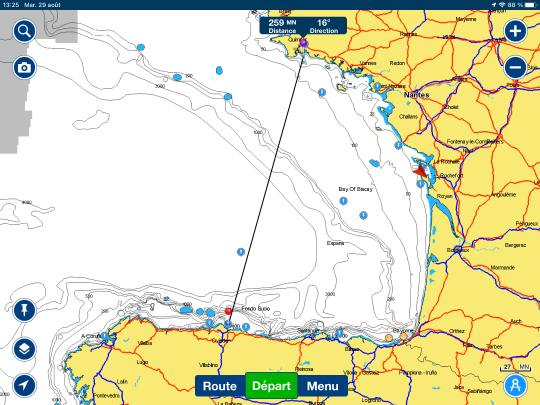
The Bay of Biscay as the start of Transat'
Crossing the Bay of Biscay is sometimes the first stage of a voyage whose ultimate goal is a Transat'. Indeed, the few shelters available once past La Rochelle oblige sailors to make this crossing in order to continue southwards. What's more, it avoids having to sail into the prevailing Westerly wind on the East-West trajectory of the North Spanish coast.
A few tips
Here are a few tips worth following
1. Waiting for the window: the importance of weather, including sea state
There's the wind, but that's not all! Taking the swell level into account is also very important. In fact, if you're crossing the Bay of Biscay from La Coruña to Brest, for example, a windy crossing with a high swell can be a common occurrence. It is therefore important to take both these factors into account.
2. Inland: keep your distance from the coast, for several reasons
When crossing the inner Bay of Biscay, it is important to :
move a little further away from the coast, some say 70-100 MN, others 30 MN, to avoid fishermen
if departing from Hendaye, take into account the Cazaux military firing range, by listening to urgent notices to mariners on VHF, checking their website or contacting the Cap-Ferret semaphore before departure.

 /
/ 